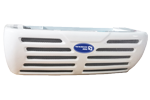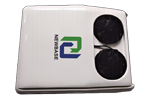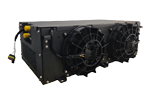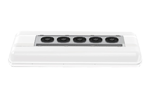Motor is widely used in industry, with wide power coverage and many types.However, new energy automobiles have higher requirements on driving motor in power, torque, volume, quality, heat dissipation, etc. Therefore, compared with industrial motors, new energy automobiles driving motor must have better performance, such as: small size to fit the limited internal space of the vehicle, wide operating temperature range (-40~1050C), to adapt to unstable working environment.High reliability to ensure the safety of vehicles and crew, high power density to provide good acceleration performance (1.0-1.5kW/kg), etc. Therefore, there are relatively few types of drive motors, relatively narrow power coverage, and relatively concentrated products.
Classification of New Energy Automotive Driving Motor
At present, the drive motors used in new energy automobiles mainly include DC motor, AC motor and switched reluctance motor. Among them, DC (brushless) motor, AC induction (asynchronous) motor, permanent magnet synchronous motor, switched reluctance motor and so on are widely used in the field of passenger cars and commercial vehicles.Other special types of drive motors include hub/wheel motor, hybrid excitation motor, multi-phase motor, dual mechanical port energy converter (Dmp-EVT). At present, there are few market applications. Whether it can be popularized on a large scale requires more time to verify the model.
(1) AC asynchronous motor, also known as induction motor, inputs three-phase AC into the stator winding, and the excitation current in the stator winding generates a rotating magnetic field in the stator core. In this case, the induction current in the rotator winding passes through and drives the rotator to rotate.When the rotator is under mechanical load, the current of the rotator increases, and the excitation current in the stator winding increases due to electromagnetic induction.The AC asynchronous motor controller uses pulse width modulation (PWM) to realize the power transformation from high voltage DC to three-phase AC, frequency converter to realize the speed control of the motor, vector control or direct torque control to achieve the fast response of the torque control, which meets the requirements of load change characteristics.
The advantages of AC asynchronous motor are simple structure, no direct contact between the stator and the rotor, high reliability, high speed and low maintenance cost.The disadvantage lies in high energy consumption, fast heating of the rotor, and the need for additional cooling system under high speed conditions.Low power factor, need large capacity frequency converter, high cost, poor speed control.Currently, AC asynchronous motors are mainly used in electric bus, logistics vehicle, commercial vehicle and other types with low space requirements and low speed performance requirements.
(2) Permanent magnet motor (PMM) includes two categories: permanent magnet synchronous motor (sinusoidal wave) and permanent magnet brushless DC motor (square wave). Its rotors are made of permanent magnet material. The stator uses three-phase winding, and the input modulation square wave generates a rotating magnetic field to drive the permanent magnet rotator.Permanent magnet synchronous motor (PMSM) has the advantages of large torque and drive efficiency, high power density and wide speed range, no excitation loss and heat dissipation, simple structure, and 15% smaller volume than asynchronous motor with the same power.Its disadvantage is that the control is complex in high-speed operation, the problem of permanent magnet demagnetization is difficult to solve at present, and the cost of the motor is high.At present, PMSM is mainly used in the field of electric passenger cars with small size, high speed and high maneuverability. Some small and medium-sized buses are also trying to use PMM as the driving source.Permanent magnet brushless DC motor is widely used in the field of low-power electric vehicle and low-speed electric vehicle.
(3) The stator and rotator cores of switched reluctance motor (Switched Reluctance Motor) are overlapped by silicon steel sheets. The double-convex pole structure is formed by the slots on the sheets. The stator produces a twisted magnetic field, and the rotator is driven by the principle of minimum magnetic resistance.Switched reluctance motor has simple structure and control, large output, high reliability, low cost, good starting and braking performance, high operating efficiency, but high motor noise, but serious torque pulsation and non-linearity, which has advantages and disadvantages in the drive of electric vehicles. At present, electric vehicles are less used.
(4) A DC motor generates a magnetic field by winding an excitation coil around the main pole of the stator and passing a direct current. The armature winding of the rotor is also passing a direct current. The active winding is placed in the magnetic field to output the electromagnetic torque to drive the load.DC motor controllers generally use thyristor pulse width modulation (PWM), which has good control performance, high speed control smoothness, simple control, mature technology and low cost.The disadvantage of DC motor is that it needs independent brushes and commutators, which limits the speed increase.Brushes are wearable and costly to maintain.DC motors are mostly used in the early drive systems of electric vehicles, and the newly developed models are almost no longer used.







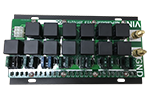
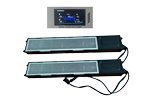
.png)
